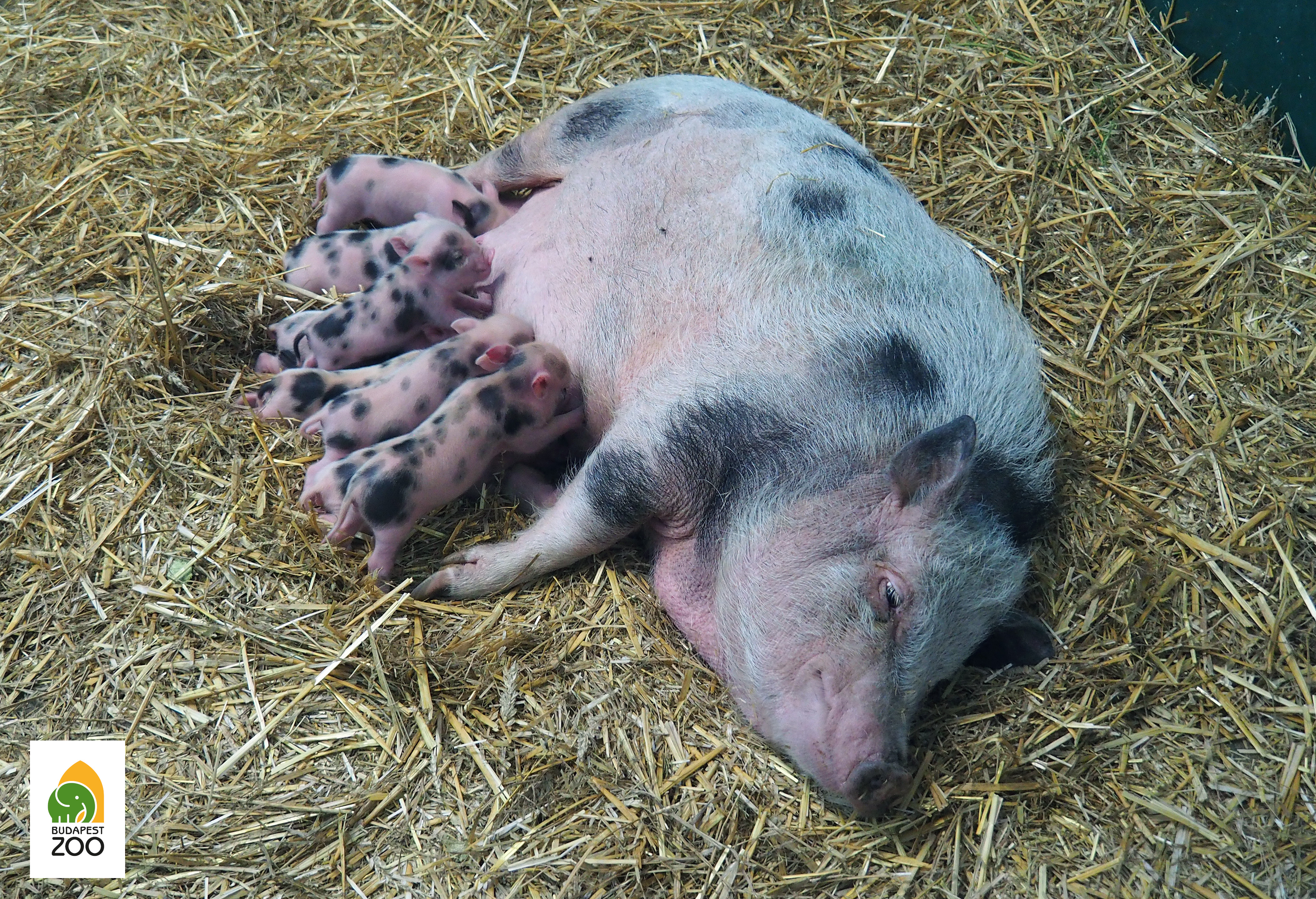Piglets of Minnesota minipigs were born July 17, 2019

The Minnesota minipig is one of the several hundreds of swine breeds. As it is well known, pigs are one of the earliest animals to be domesticated by man. Its ancestor living in the wild is the wild boar, which was gradually domesticated more than 12-13,000 years ago. Though domestication might originally have taken place primarily in the Middle East, domestic pigs are raised all over the world nowadays (except of course in places where people do not consume pork for religious reasons). As a result of the breeding activities of humans, many different breeds have developed, one of which is the Minnesota minipig.
Various miniature pig varieties are not primarily kept as farm animals nowadays but as pets, though there is strong interest in them for medical and pharmaceutical research. Previously in Hungary, the Vietnamese pot-bellied pig was the best-known of the miniature swine breeds; however, certain Hungarian breeders also breed several other breeds and varieties these days, including the Minnesota minipig.
The Minnesota minipig was first bred in the 1940s. In the Hormel Institute of the University of Minnesota, USA, researchers intended to breed a small-sized pig, which could serve 
Domesticated swine are not only represented at our Zoo by the Minnesota minipig, as we also show our visitors the blond mangalitsa, a breed native to the Carpathian Basin. Further related animals are the wild pig varieties, such as the red river hog, native to Africa, and the Visayan warty pig, which can be found on some islands of the Philippines.
The Budapest Zoo and Botanical Garden considers it of utmost importance to present domestic animals to visitors, in addition to the wide range of wild animals. Since the overwhelming majority of people today live in an urban environment, farm animals are genuinely exotic to many. As such, the efforts to present domesticated animals to visitors are nowadays a general trend in zoos. This global trend dates back to the 1960s, but in our Zoo, one of our former directors, Adolf Lendl, had already identified presenting domestic animals to urban visitors as an important task for zoos more than a hundred years ago, fifty years ahead of his time. What is more, in the course of time, our institution has been very actively participating in saving several native Hungarian breeds or breeds that became native to Hungary a long time ago, including the Hungarian grey cattle, the hucul horse and several Hungarian dog breeds.